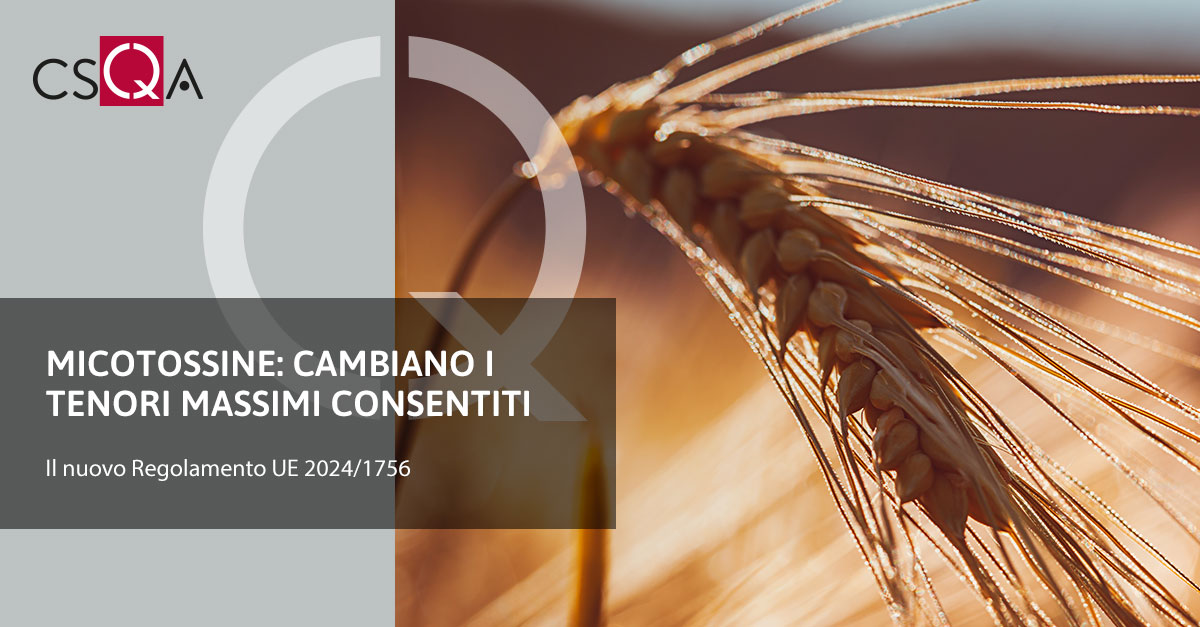 Just over a year after the repeal of EU Regulation 1881/2006 and its replacement with Regulation (EU) 2023/915 , the latter is updated and modified by a new document, EU Regulation 2024/1756 .
Just over a year after the repeal of EU Regulation 1881/2006 and its replacement with Regulation (EU) 2023/915 , the latter is updated and modified by a new document, EU Regulation 2024/1756 .We recall that Regulation (EU) 2023/915 , in establishing new maximum limits for contaminants in food, had granted transitional measures to allow economic operators to prepare for the application of the new rules, and guarantee a smooth transition from the regulation (EC ) n. 1881/2006.
The new limits established were listed in Annex I, defining that, if foods are contaminated in a quantity exceeding the established maximum content, they cannot be placed on the market or used as raw materials in foods or as ingredients of foods.
In systems where the production and processing of cereals are integrated so that all incoming batches are cleaned, sorted and processed in the same establishment, the maximum levels apply to unprocessed cereals at the stage of the production chain preceding the first processing.
For dried, diluted, processed or compound foods (i.e. consisting of more than one ingredient), the following aspects shall be taken into account when applying the relevant maximum levels to them:
changes in the concentration of the contaminant caused by drying or dilution processes;
changes in contaminant concentration caused by transformation;
the relative proportions of the ingredients in the product;
the analytical limit of quantification.
Where the food business operator does not provide the necessary concentration, dilution or transformation factor or where the competent authority considers this factor to be unsuitable in light of the justification, the competent authority itself shall define the factor based on the information available, pursuing at the same time the objective of maximum protection of public health.
To date, with the publication of the new EU Regulation 2024/1756 of the Commission of 25 June 2024 , the limits reported in Annex I have been modified again, which is therefore replaced. (Source: Silvia Fiorani, https:// www.ruminantia.it/ )